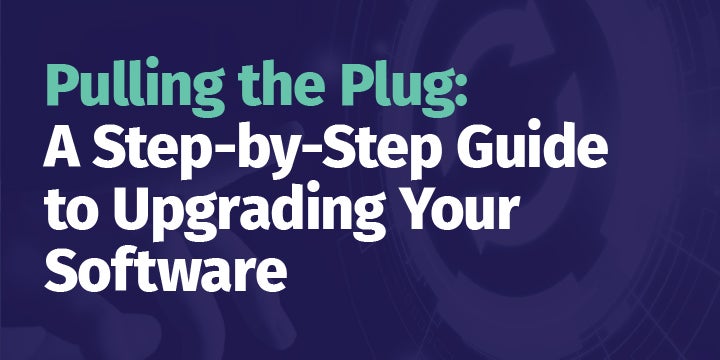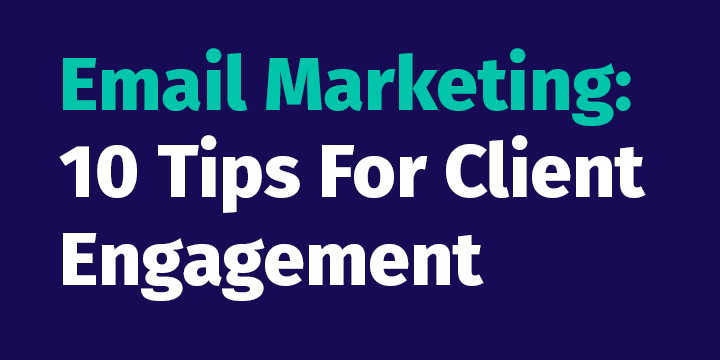How To Build A Great Customer Experience

Customer experience is becoming increasingly important, and businesses know it. Around 46% of businesses state that improving customer experience (CX) is their number one priority over the next five years (SuperOffice). However, most companies are falling short of their CX goals. In fact, less than half of all companies provide a satisfactory customer experience (SuperOffice). Why is this? It’s likely because they do not have a firm understanding of customer experience or a strategy to improve it.
Building a great customer experience is easier said than done. It involves putting yourself in your customer’s shoes, fully understanding their needs, and consistently providing a smooth and seamless experience for them every step of the way. Improving customer experience can be challenging, but the benefits are worth the investment. When you provide an excellent customer experience, your customers will reward you with loyalty. And loyalty is everything.
Loyalty Is Priceless
“Customer satisfaction is worthless. Customer loyalty is priceless.” - Jeffrey Gitomer
Consider the quote above. While we don’t necessarily agree that customer satisfaction has no value, the meaning here is that satisfaction is short-term, while loyalty is long-term. A customer who is simply “satisfied” is neutral and won’t necessarily use your services again, let alone encourage others to do so. A loyal customer, on the other hand, brings consistent revenue and may even advocate on behalf of your company with positive word-of-mouth recommendations and reviews. But it all starts with your website.
One of the most significant benefits of creating a great customer experience is that it builds trust and loyalty. Gaining new customers is crucial, but retaining the ones you have is just as important, if not more so. A loyal customer will come to your company for services, time and time again, as long as you continue to provide an excellent customer experience.
Continued offerings, new services, offers and deals, email marketing to existing clientele, and being a part of the community all have a part to play in creating loyalty. Here, the critical takeaway is don’t take your existing customers for granted – prioritizing their happiness and listening to their feedback will immensely benefit your company.
Understanding Customer Experience
One of the most common reasons businesses cannot provide a good customer experience is that they don’t have a clear understanding of the concept. So what is customer experience, exactly? Let’s start by explaining what it is not. Customer experience is not the same as customer service. Customer service is crucial to customer experience, but CX goes far beyond this. CX includes every factor that contributes to a customer’s perception of the company throughout the entire customer journey, from their first contact to (hopefully) becoming a happy and loyal customer.
Advertising, marketing, company culture, branding, customer service, and business partners all fall under the CX umbrella. Many factors of customer experience, such as the services themselves, the suppliers you work with, and your technicians’ attitude and skill level, are all within your company’s control. Other factors, such as the customer’s mentality when they purchase services, their biases, and the type of media they use, are not. Knowing the difference between what is under your control and what isn’t is essential when determining your CX strategy. When you can pinpoint the parts of the customer journey that are causing frustration for your customers, you can take the necessary steps to alleviate these tensions and provide a seamless, positive experience for your customers, time and time again. Not only is this good for the customer, but it’s also good for you.
How Enhancing CX Benefits Your Business
A better customer experience benefits your customers and every aspect of your business. Here are a few advantages of prioritizing customer experience:
Customer Retention - As we mentioned, a good customer experience results in a repeat customer. Maintaining your existing customers’ happiness builds their trust and loyalty in your brand.
Higher Efficiency - Customers want speed and efficiency throughout their customer journey. Becoming more efficient directly benefits your business. After all, time is money.
Better Communications - A big part of CX is communication. Improving your internal and external communication makes your company more efficient and productive.
More Informed Decision Making - Communicating with customers and listening to their feedback gives you the power to make better decisions for your company. You’ll know exactly what is working for your customers and what isn’t. Then you can plan accordingly.
Good Publicity - An excellent customer experience will lead to positive word of mouth and reviews. While also decreasing negative reviews and creating a more positive perception of your company for prospective customers.
Increased Revenue - Repeat customers, good publicity, and improved communication all contribute to higher revenues. Plus, around 30% of consumers say they are willing to pay more for a superior customer experience (CGS).
Decreased Turnover - Not only does better CX mean less customer turnover, but it can also mean less employee turnover. It’s easy for employees to get burned out when dealing with unhappy customers. When customers are happier, employees are happier, and vice versa.
Competitive Edge - When a prospective customer is deciding between your business and a competitor, a better customer experience can make all the difference.
In our post-COVID world, customer experience has never been more critical. In fact, over half of U.S. consumers have stated that COVID-19 made them value customer service more when deciding which business to patronize (CGS). The necessity of building a great customer experience is clear, but now we must create a path toward achieving this.
Crafting Your Customer Experience Strategy
By now, you understand what customer experience is and why it’s important. But how exactly do you go about optimizing it? Where do you start? How does it fit into the day-to-day operations of your field service business?
Customer experience is a broad concept, so CX strategy can look different from business to business. There is a multitude of ways that you can improve customer experience, and the way you approach this may depend on the size of your business, your goals, your company mission, and more. That said, a solid CX strategy will typically include the following steps:
1. Track The Customer Journey
It may seem obvious, but in order to improve the experience for your customers, you need to have a full understanding of your customers and what they want. You can do this by tracking the customer journey – purchase history, pain points, feedback, etc. This is all valuable information just waiting to be utilized. You should also consider the qualities of the ideal customer for your business. What type of customers do you want to attract? What are their needs? How do these needs change from season to season?
2. Help Your Customers Help Themselves
You are an expert in your field and have a wealth of information and experience to offer your customers. Making this information accessible to current and potential customers is a simple way to build trust in your brand. Consider your customers’ common questions and pain points, and provide answers and solutions on your website. Blog posts, FAQs, and checklists can benefit those who visit your website needing your services. A helpful, informative website that’s easy to navigate will help you anticipate your customers’ and prospects’ needs, improving customer experience and ultimately building invaluable trust and loyalty.
3. Create A Friendly Company Culture
Emotions drive loyalty. In fact, over ¾ of customers feel more emotionally connected to a company when their issues are resolved by customer service (CGS). A culture rooted in kindness and integrity lays the foundation for a better customer experience. Listen to your customers and consider investing in customer relationship management (CRM) software for more personalized service and better communication. In addition to listening to your customers, be sure to listen to your employees. Employees are on the front lines of customer service and can provide valuable insight into the customer journey. To equip your team with the best customer service skills, investing in training and seminars on emotional intelligence can be helpful.
4. Provide Feedback Opportunities
Customer feedback is a fantastic tool for achieving your CX goals. Be sure to provide your customers with avenues for leaving feedback, whether this is through a form on your website, an email address, or a survey via text or phone call. Don’t underestimate the value of customer feedback. While it can sometimes be hard to hear, it is a window into the customer experience and will provide you with an opportunity to improve. Providing feedback opportunities internally can also decrease negative reviews on public forums such as Google and Yelp. Be sure to ask for feedback immediately after service and respond to each submission.
Pro Tip: Use These Key Metrics To Gauge Customer Experience:
Customer feedback is a fantastic tool for achieving your CX goals. Be sure to provide your customers with avenues for leaving feedback, whether this is through a form on your website, an email address, or a survey via text or phone call. Don’t underestimate the value of customer feedback. While it can sometimes be hard to hear, it is a window into the customer experience and will provide you with an opportunity to improve. Providing feedback opportunities internally can also decrease negative reviews on public forums such as Google and Yelp. Be sure to ask for feedback immediately after service and respond to each submission.
Net Promoter Score (NPS): Ask your customers to rank, on a scale of one to ten, how likely they are to recommend the company. The higher the score, the more likely the customer will promote and be loyal to your company.
Customer Satisfaction Score (CSAT): Ask your customers, on a scale of one to five, how satisfied they are with their purchased service. To calculate the CSAT, divide the total number of satisfied customers according to the survey (a score of four or five) by the total number of survey responses, then multiply by 100 to get the percentage of satisfied customers.
Customer Effort Score (CES): CES is recorded with a one-question survey that asks how easy it is for customers to interact with your business.
5. Act On Customer Feedback
Once you have customer feedback data, taking action is crucial. Prove to your customers that you care about them by implementing the changes they want. Once the changes have been made, track and measure improvement in customer feedback. Be sure to publicize these changes to keep customers in the loop and show them that you are dedicated to providing them with the best possible CX.
6. Show Appreciation To Your Customers
A little appreciation can go a long way. You know how important your customers are to you, so make sure they know it too. Take the time to periodically thank your customers for their loyalty. Offers, discounts, and personalized holiday messages are a great way to show appreciation to your customers and continue to foster loyalty to your brand.
Partner With FieldRoutes To Simplify, Scale, and Grow Your Business
Customer experience should be a priority for all businesses, but it is vital for businesses that provide essential services, such as pest control and lawn care companies. FieldRoutes, a ServiceTitan company, can help you achieve your customer experience goals with software specifically tailored to meet the needs of the field service industries. Our software provides a streamlined solution to scheduling, routing, payment collections, reporting, and more, making your company more efficient and contributing to a better customer experience.
To learn more about how FieldRoutes can help simplify, scale, and grow your field service business, schedule a free demo or get in touch to request more information today.





